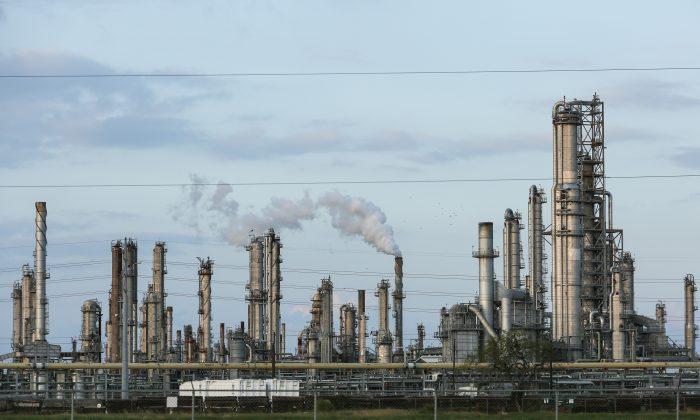U.S. petroleum net imports peaked in 2005, reaching over 14 million bpd. It has declined gradually since then, falling to an average of 2 million bpd in recent months. This trend was the result of many factors, including increased domestic production of crude oil and hydrocarbon gas liquids.
U.S. oil production has more than doubled since 2012 because of the shale revolution, which started with the development of new technologies in oil extraction.
In the past half-century, the Organization of the Petroleum Exporting Countries (OPEC), led by Saudi Arabia, had largely dictated the oil markets. The rise of U.S. shale production, however, recently changed the dynamics.
The shale revolution has transformed the United States into the world’s largest petroleum producer, surpassing Russia and Saudi Arabia in recent months.
The news about the United States becoming a net oil exporter was largely ignored last week, as markets were obsessed with the OPEC meeting in Vienna.
“While there is so much focus on the drama in the OPEC cartel, the real historic news that went unnoticed was that the United States last week exported more crude oil and fuel than it imported for the first time on record,” Phil Flynn, analyst at Price Futures Group in Chicago, wrote in an email.
OPEC Cuts Production
OPEC members and Russia agreed to cut oil production Dec. 7 after a two-day meeting in Vienna, rebuffing Trump’s call for higher output and lower oil prices. Saudi Arabia, Russia, and the rest of the OPEC nations announced to cut oil output by 1.2 million bpd for the first six months of 2019.According to the agreement, the 15-member OPEC cartel will reduce output by a total of 800,000 bpd, while non-OPEC producers, led by Russia, committed to another 400,000 bpd cut.
Trump has repeatedly demanded that OPEC and Saudi Arabia push prices down. A day before the OPEC meeting, Trump sent another message to the cartel via Twitter.
“Hopefully OPEC will be keeping oil flows as is, not restricted. The World does not want to see, or need, higher oil prices!” he wrote on Dec. 5.
The agreement is only for six months, and the cartel will review the supply-demand balance again in April 2019, according to the reports.
Oil prices have nosedived since peaking in early October amid fears of a potential supply glut and cooling global demand. Crude prices have slid nearly 30 percent from their highs.
To prevent a further slide in oil prices, Saudi Arabia’s Minister of Energy Khalid Al-Falih announced last month plans to cut production. Russian Energy Minister Alexander Novak, however, was more cautious about cuts, saying that “the market is in the stage of a good balance” because of temporary waivers for Iran oil.
Diverging perceptions of supply caused volatility in oil prices in recent weeks.
In November, Trump reinstated economic sanctions on Tehran but granted waivers to eight countries for oil imports from Iran to prevent a spike in oil prices. Oil prices sold off sharply following the news of exemptions. The market’s initial expectation was a more dramatic decline in global supply with fears of potentially zero Iranian exports.
The recent slump in oil prices is good for U.S. households. However, too low of a price may hurt U.S. shale oil producers in the long run. Low prices may lead to a slowdown in drilling activity and lower investments in the shale patch, according to experts.
The production cuts by OPEC and Russia will bring oil inventories back to their 5-year average level, Goldman Sachs analysts said in a report.
“We forecast Brent prices back slightly above $70 per barrel in early 2019—a price level consistent with normalized inventories, but not high enough to overstimulate shale drilling activity,” the report said.





